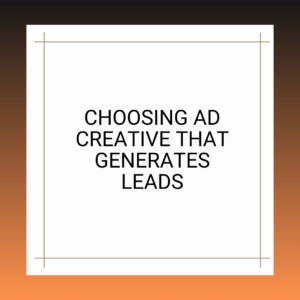In the realm of lead generation, the quality and appeal of your lead forms can make or break your campaign’s success. Lead forms act as the bridge between potential customers and your business, making it essential to craft them thoughtfully and persuasively. In this section, we will explore the key elements of creating compelling lead forms that entice users to share their information willingly.
Understanding the Importance of Lead Forms
Lead Forms as Information Collectors: Lead forms are designed to capture crucial information from potential customers, such as their names, email addresses, phone numbers, and more. This data allows you to establish direct communication and build relationships with leads.
User Experience: A well-designed lead form enhances the user experience by simplifying the process of sharing information. Users are more likely to engage when they encounter user-friendly and visually appealing forms.
Conversion Rate Impact: The quality and relevance of your lead forms directly impact your campaign’s conversion rate. An effective lead form can significantly boost the number of leads you generate.
Elements of Crafting Compelling Lead Forms
1. Clear and Concise Headlines
Purpose: The headline is the first thing users see, so it should convey the value of the offer concisely.
Tips: Use attention-grabbing headlines that clearly state the benefits users will receive by completing the form. Keep it brief and to the point.
2. Benefit-Oriented Descriptions
Purpose: Descriptions provide additional context and encourage users to complete the form.
Tips: Explain what users will gain by sharing their information. Focus on the value and relevance of your offer.
3. Relevant Form Fields
Purpose: Collect only the information you need to minimize friction and increase form completion rates.
Tips: Tailor the form fields to your campaign’s objectives. For instance, if you’re offering a newsletter subscription, asking for a phone number might not be necessary.
4. Visual Appeal
Purpose: A visually appealing form enhances the overall user experience and professionalism of your campaign.
Tips: Use custom images or logos that align with your brand. Choose a layout that is easy to navigate on both desktop and mobile devices.
5. Pre-Filled Information (Optional)
Purpose: Pre-filling some fields with user data from their Facebook profiles can reduce friction.
Tips: Use pre-filled fields strategically, ensuring they are relevant and do not overwhelm users.
6. Privacy and Data Usage Transparency
Purpose: Ensure users feel confident about sharing their information by addressing privacy concerns.
Tips: Include a link to your privacy policy and a brief statement on how you will use their data. Transparency builds trust.
7. Compelling Call-to-Action (CTA) Buttons
Purpose: The CTA button should prompt users to take action and submit the form.
Tips: Use action-oriented words like “Get Started,” “Download Now,” or “Sign Up.” Make the button visually distinct and easy to click.
8. Thank-You Message or Page
Purpose: After submission, users should receive confirmation and potentially additional information.
Tips: Craft a thank-you message that acknowledges their action and informs them about the next steps or what to expect.
A/B Testing and Optimization
Even with a well-crafted lead form, there’s always room for improvement. A/B testing is a valuable technique for optimizing your lead forms. Here’s how to approach it:
Test One Element at a Time: To isolate the impact of changes, focus on one element at a time, such as the headline, description, or CTA button.
Monitor Performance: Keep a close eye on metrics like conversion rate, form abandonment rate, and the quality of leads generated.
Iterate Based on Data: Use the data from A/B tests to make informed decisions about which elements to tweak or refine.
In conclusion, crafting compelling lead forms is a critical step in the lead generation process. An effective lead form should communicate the value of your offer clearly, minimize friction, and build trust with users. By paying attention to the details and continually optimizing your forms, you can maximize the success of your lead generation campaigns on Facebook Ads. In the upcoming sections, we will explore further strategies to target your ideal audience and ensure your ads reach the right people.
In the realm of lead generation, the quality and appeal of your lead forms can make or break your campaign’s success. Lead forms act as the bridge between potential customers and your business, making it essential to craft them thoughtfully and persuasively. In this section, we will explore the key elements of creating compelling lead forms that entice users to share their information willingly.
Understanding the Importance of Lead Forms
Lead Forms as Information Collectors: Lead forms are designed to capture crucial information from potential customers, such as their names, email addresses, phone numbers, and more. This data allows you to establish direct communication and build relationships with leads.
User Experience: A well-designed lead form enhances the user experience by simplifying the process of sharing information. Users are more likely to engage when they encounter user-friendly and visually appealing forms.
Conversion Rate Impact: The quality and relevance of your lead forms directly impact your campaign’s conversion rate. An effective lead form can significantly boost the number of leads you generate.
Elements of Crafting Compelling Lead Forms
1. Clear and Concise Headlines
Purpose: The headline is the first thing users see, so it should convey the value of the offer concisely.
Tips: Use attention-grabbing headlines that clearly state the benefits users will receive by completing the form. Keep it brief and to the point.
2. Benefit-Oriented Descriptions
Purpose: Descriptions provide additional context and encourage users to complete the form.
Tips: Explain what users will gain by sharing their information. Focus on the value and relevance of your offer.
3. Relevant Form Fields
Purpose: Collect only the information you need to minimize friction and increase form completion rates.
Tips: Tailor the form fields to your campaign’s objectives. For instance, if you’re offering a newsletter subscription, asking for a phone number might not be necessary.
4. Visual Appeal
Purpose: A visually appealing form enhances the overall user experience and professionalism of your campaign.
Tips: Use custom images or logos that align with your brand. Choose a layout that is easy to navigate on both desktop and mobile devices.
5. Pre-Filled Information (Optional)
Purpose: Pre-filling some fields with user data from their Facebook profiles can reduce friction.
Tips: Use pre-filled fields strategically, ensuring they are relevant and do not overwhelm users.
6. Privacy and Data Usage Transparency
Purpose: Ensure users feel confident about sharing their information by addressing privacy concerns.
Tips: Include a link to your privacy policy and a brief statement on how you will use their data. Transparency builds trust.
7. Compelling Call-to-Action (CTA) Buttons
Purpose: The CTA button should prompt users to take action and submit the form.
Tips: Use action-oriented words like “Get Started,” “Download Now,” or “Sign Up.” Make the button visually distinct and easy to click.
8. Thank-You Message or Page
Purpose: After submission, users should receive confirmation and potentially additional information.
Tips: Craft a thank-you message that acknowledges their action and informs them about the next steps or what to expect.
A/B Testing and Optimization
Even with a well-crafted lead form, there’s always room for improvement. A/B testing is a valuable technique for optimizing your lead forms. Here’s how to approach it:
Test One Element at a Time: To isolate the impact of changes, focus on one element at a time, such as the headline, description, or CTA button.
Monitor Performance: Keep a close eye on metrics like conversion rate, form abandonment rate, and the quality of leads generated.
Iterate Based on Data: Use the data from A/B tests to make informed decisions about which elements to tweak or refine.
In conclusion, crafting compelling lead forms is a critical step in the lead generation process. An effective lead form should communicate the value of your offer clearly, minimize friction, and build trust with users. By paying attention to the details and continually optimizing your forms, you can maximize the success of your lead generation campaigns on Facebook Ads. In the upcoming sections, we will explore further strategies to target your ideal audience and ensure your ads reach the right people.










